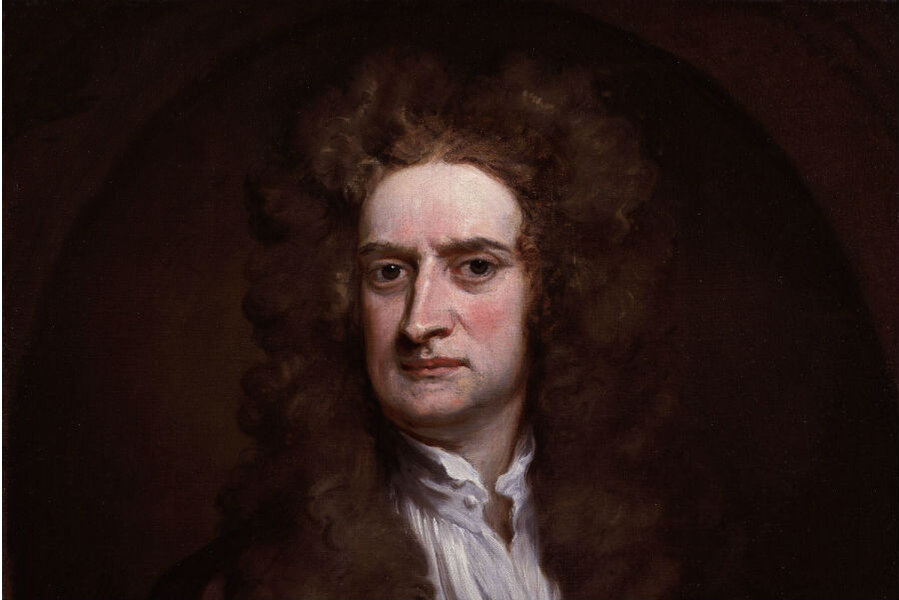Newton's opus sells for $3.7 million: How 'Principia' changed perceptions
Loading...
A copy of Sir Isaac Newton's "Philosophiæ Naturalis Principia Mathematica," one of the most groundbreaking scientific texts ever written, has been sold for $3.7 million. The enormous price tag makes this first edition the most expensive scientific bound volume ever sold at auction.
One of the most famous books in the Western scientific canon, Newton's magnum opus was a major stepping stone in the scientific revolution and fundamentally changed how humanity saw the world. Known casually as "Principia Mathematica" or simply "Principia," the 1687 book formed the backbone of a new way of looking at physics that remains an important part of scientific and mathematical inquiry to this day.
Schoolchildren’s introduction to Newton’s serendipitous discovery of gravity beneath an apple tree belies the profound depth of his intellectual rigor and the myriad ways in which he shaped the way all who have come since have studied the physical world. It was in “Principia” that he laid out the three laws of motion that remain the scaffolding on which all modern physics has been built. There too, he shattered perceptions of the heavens as the realm of angels and brought the moon and planets into Earthly focus.
"Newton's ‘Principia’ is to my mind the most impressive scientific work to this day, based on the breadth of novel ideas that it contains and the importance of those ideas for the development of the natural sciences that followed," Joshua Erlich, a physics professor at the College of William & Mary tells the Christian Science Monitor in an email.
Included in “Principia” is the first mention of Newton's now-famous law of universal gravitation, which stood as the primary means of understanding gravitational attraction until Einstein's theory of general relativity supplanted it during the 20th century.
“Principia” also contains Newton's three laws of motion, which are as follows, according to a 1792 translation of Newton's original Latin by Andrew Motte:
Law I: Every body perseveres in its state of rest, or of uniform motion in a right line, unless it is compelled to change that state by forces impressed thereon.
Law II: The alteration of motion is ever proportional to the motive force impressed; and is made in the direction of the right line in which that force is impressed.
Law III: To every action there is always opposed an equal reaction: or the mutual actions of two bodies upon each other are always equal, and directed to contrary parts.
These laws formed a new way of understanding the how objects interact using mathematics. Newton's revolutionary understanding of physics would go on to change how scientists, philosophers, artists, and even political figures saw the world.
"It is difficult to overestimate the incredible breadth of important observations included in Newton's great work," says Dr. Erlich.
Beyond his academic influence, he altered common perceptions of the moon and planets as ethereal objects on another plane.
"Newton described in print for the first time how the motion of the Moon and the planets follow the same mathematical rules as the motion of objects on Earth. Objects in the heavens were no longer propelled by angels, but by Earthly forces," says Dr. Erlich. "This was enormously important for the development of physics and astronomy."
Born in 1643, just 11 years after Galileo Gelilei first published the heretical notion that the Earth orbited around the sun, Newton came of age amid a renaissance in scientific thought. In 1661, he began attending Cambridge University, where he was surrounded by ideas of the scientific revolution and the first glimmers of the dawn that would become the Age of Enlightenment. Despite an intense interest in his studies, however, the young Isaac Newton graduated Cambridge without honors.
But just a few years later, Newton became a professor at his alma mater, where his mathematical ideas and scientific study of optics caught the attention of his contemporaries in the scientific and philosophical community. The 1687 publication of “Principia” propelled him him to the forefront of Enlightenment intellectual society and into the history books.
The first printing of “Principia” included no more than 400 copies, only half of which are believed to remain in existence today.
Christie's Auction House had expected to get slightly more than $1 million for the recent sale of a first edition copy. Instead, the rare tome went for over three times that price.
"I believe there are fewer than 200 copies of the first edition known to exist, so it is the combination of its rarity and its importance that lends these first-edition copies their value,” says Erlich, who has done extensive research on the provenances of another first-edition copy owned by William & Mary.
While many of Newton's ideas as a complete explanation for universal mechanics have been supplanted by more recent advances in relativistic and quantum physics, the ideas presented in "Principia Mathematica" almost 330 years ago, still hold up as a practical means of solving motion-based problems, and are still used by researchers today.
"These are the mathematical rules that govern the macroscopic world around us," says Erlich. "They allow for the construction of safe bridges and roads, the designs of tall buildings, and the creation of realistic animations and video games."








